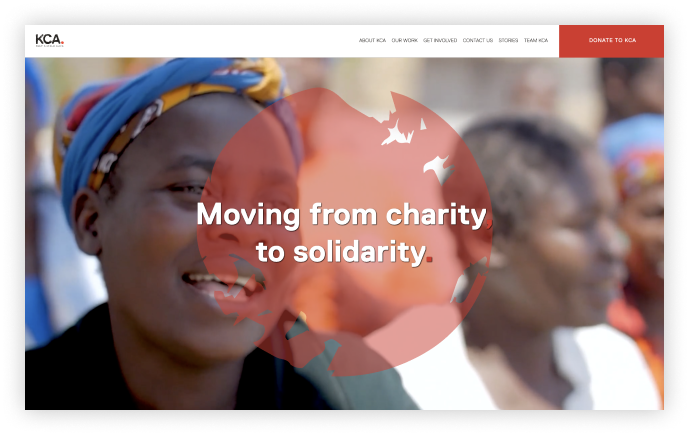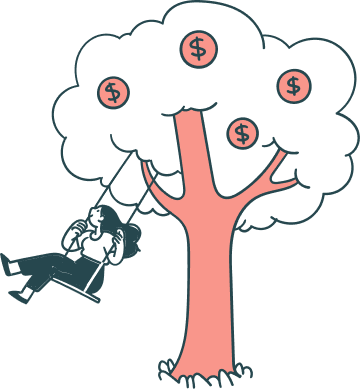Mobile fundraising represents a growing trend in the mission-driven sector. According to research from Nonprofits Source, 25% of donors complete their donations on mobile devices.
If your organization hasn’t already incorporated mobile giving into your fundraising strategy, you’re missing out on an opportunity to drive donations in a way that’s engaging and convenient for everyone involved.
These five highly effective mobile fundraising campaigns are great examples of how successful a mobile fundraising campaign can be when the right principles are applied and followed. Here are the five case studies we’re going to explore:
- The Red Cross’s Haiti Earthquake Relief Effort
- Alicia Keys’ Campaign for Keep A Child Alive
- President Obama’s Text-to-Give Campaign
- The NFL’s Partnership with United Way to Encourage Youth Fitness
- The UNICEF Tap Project
Then, we’ll guide you through each step of creating your own mobile fundraising campaign. Ready to unlock the power of mobile fundraising? Let’s get started!
5 Best Fundraising Campaigns
Below are the top 5 most noteworthy and successful mobile fundraising campaigns from the past decade.
1. The Red Cross’s Haiti Earthquake Relief Effort
One of the most notable and widely talked about mobile fundraising campaigns of the last ten years was the Red Cross’s Haiti earthquake relief fund campaign. To this day, it is still one of the top reference points when people speak about text-to-give. It was one of the first majorly successful mobile fundraising efforts.
For an overwhelming majority of people surveyed, the Haiti campaign was the first time they had ever used texting to donate to charity.
In the end, the Red Cross’s mobile giving campaign raised over tens of millions of dollars that went toward:
- General emergency relief
- Rebuilding shelter
- Water and sanitation
- Disease prevention
- Health and wellness
The immensely successful “Text HAITI to 90999” campaign may have only lasted a few months, but the impact it had on mobile giving as a whole is still felt in the nonprofit realm today.
Because of the unbelievable outpouring of support, disaster relief efforts from 2010 forward were able to be funded with the help of this easy-to-use technology. Not only that, but it also opened the door for other nonprofit organizations to use text-to-give as a viable means of fundraising.
Here are some of the key points that helped the Red Cross succeed:
- They promoted their mobile fundraiser early and often.
- They showed transparency in how they used their donations.
- Their website still displays how those mobile donations were used.
- They appealed to donors’ hearts using videos, photos, and moving words.
With these key points in mind, your organization will be well on its way to major mobile fundraising success.

2. Alicia Keys’ Campaign for Keep A Child Alive
As a part of her involvement as co-founder of the Keep A Child Alive foundation, Alicia Keys launched one of the most inspiring and successful mobile fundraising efforts of the past ten years.
The goal of Keep A Child Alive is to bring awareness to and eradicate the AIDS epidemic in India and sub-Saharan Africa.
With the help of mobile donors, Keep A Child Alive provides families and orphans affected by the AIDS crisis in Africa and India with:
- Life-saving AIDS medication
- Shelter and orphan care centers
- Grief counseling
Using her influence as an internationally-acclaimed superstar, Keys asked everyone who attended her sold-out concerts to text “ALIVE” to 90999. Her calls to action at live events, coupled with her simple but effective advertising, helped spread the word about her campaign like wildfire.
From text message micro-donations ($5 to $10) alone, the campaign was able to raise over $40,000 in just a few short months during the Fall of 2008.
Keys, as a global ambassador and co-founder of the Keep A Child Alive movement, used her status as a touring musician and an international advocate to incite her fans to donate to the cause. She took time out of each of her concerts that year to explain the process and the importance of contributing to the fund. Keys also appeared on American Idol to make a plea to a wider audience. Her brilliant efforts were rewarded in kind, and the foundation continues to flourish to this day.
Here are some of the key points that helped Keep A Child Alive Succeed:
- The efforts were promoted at live events.
- Instructions for how to donate were made clear and easy-to-follow.
- They used action words in their campaign, such as “Change,” “Act,” and more.
- They also used powerful statistics to back up their claims and inspire donors to act.
Chances are, your organization hosts live events from time to time. Fundraising events like concerts and 5K races are the perfect places to promote your mobile fundraising campaign, just like Alicia Keys did.
3. President Obama’s Text-to-Give Campaign
Text-to-give isn’t just for charities, nonprofits, and churches. Other organizations, such as political campaigns, have hopped on the mobile giving train.

The chief difference between the two was that President Obama had previously used texting as a means of rallying supporters back in 2008. His supporters were familiar with the medium, and therefore it came naturally to them when he asked them once again at his campaign rallies to band together and support his efforts.
At each of his rallies, President Obama was able to ask thousands of his supporters at a time to take out their phones to donate and get the word out about the vote.
Not only has he been big on text-to-give for his own political campaigns, he has also been a huge proponent of the Red Cross’s disaster relief efforts, often mentioning their mobile fundraising campaigns in his own speeches and national addresses.
Here are some of the key points that helped President Obama’s mobile campaign succeed:
- President Obama incorporated donation buttons on his campaign website that read “Quick Donate: $5,” which made it easy and intuitive for donors to give on the spot.
- He optimized his campaign site for mobile so that constituents could give through online donation pages as well as through text messages.
- He also promoted his mobile fundraising campaign at every rally and event on the campaign trail.
Once again, it’s clear that promoting your campaign at live events greatly affects your campaign’s efficacy. Optimizing your website for mobile also has an obvious impact on mobile donations.
4. The NFL’s Partnership with United Way to Encourage Youth Fitness
In 2008, the United Way and the NFL teamed up for a great cause. The text-to-give campaign was launched during Super Bowl XLII, and proceeds went directly to the United Way’s funds to fight childhood obesity.
Using a 10-second TV commercial, athlete Tom Brady invited Super Bowl watchers to take out their phones and donate. The response was overwhelmingly positive.
Even though this effort predated the Red Cross’s HAITI campaign by two years and mobile fundraising was still largely unheard of, the United Way’s mobile fundraiser was extremely successful.
They managed to raise awareness for youth fitness as well as an astounding $10,000 the same night that the commercial aired. More than 2,000 people responded immediately to the call-to-donate.
Since then, the United Way has launched several other successful mobile campaigns, but this effort was one of the most notable for its immediate, rapid response. Each year, the NFL actually donates a free commercial spot to the United Way. This donation is the NFL’s way of helping end childhood obesity.
Here are some of the factors that helped the United Way succeed:
- They captured the attention of a large audience using a commercial.
- The campaign promoted their efforts on a local level as well as a national level.
- They incorporated actionable steps to solve the problems they set out to fix. Bus stop advertising a mobile fundraising campaign
Your organization may not be able to buy a commercial during the SuperBowl, but you can advertise your mobile fundraising efforts on local channels, in local magazines, or at bus stops.
Getting the word out is one of the most important components of a successful mobile fundraising campaign. If you follow their lead, you’re bound to be successful in your own efforts.
5. The UNICEF Tap Project
“How long can you go without touching your phone?”
This is the question that UNICEF (United Nations Children’s Fund) asked of people during their famous Tap Project.
While the app was live, users would download the app and aim not to use their phone for as long as they could possibly stand. The longer each user went without touching their phone, the more clean water was donated by UNICEF to children in need. This became a viral sensation because it required close to zero effort on the user’s part.

Here are some of the key points that helped UNICEF succeed:
- UNICEF incorporated images of the children who were affected by the potable water crisis into their mobile campaign.
- They also used statistics and facts to encourage donors to take action.
- They made their mobile fundraising campaign easy for all users.
Adding statistics and facts about your cause to your campaign is sure to drive engagement. Keep in mind that people want to feel as though they are making a tangible difference in the world by donating to your mission.

Steps to Creating a Successful Mobile Giving Campaign
With our favorite mobile fundraising campaigns to guide you, it’s time to look towards your own campaign. Follow these steps to ensure your mobile fundraising efforts are a success:
Incorporate Mobile Fundraising into Your Overall Strategy
Incorporating a mobile fundraising strategy into your existing fundraising strategy can be a daunting task. Before you begin, you need to answer the following questions:
- Who is going to be in charge of running the mobile fundraising campaign? Getting your mobile fundraising campaign off the ground might require some staff reallocation. If you foresee needing more than just a few hours here and there reallocated from your existing staff, then it might be wise to consider hiring a new team member to take on the responsibilities associated with mobile.
- What is our plan for mobile fundraising? If you need to maintain text-to-give donations every week, you’ll have to come up with an individual plan for how you incorporate those donations into your existing fundraising strategy. Likewise, if you reserve mobile fundraising for only special occasions, you’ll still need to create a contingency plan.
- When will the mobile fundraising campaign take place? It’s important to determine a timeline for implementing mobile fundraising. Keep in mind that your mobile fundraising campaign promotions will need to precede your actual campaign launch. The key is to plan ahead!
- Where will we tell people about our mobile fundraising plans? In addition to using your existing modes of communication to get the word out about your mobile fundraising campaign, your nonprofit can also let its donors know about mobile fundraising at a pre-planned event, such as a concert, annual gala, or church service.
Once you’ve answered all of the above questions, you can move on to the technical aspects of mobile fundraising.
Check that You’re Ready for Mobile
Make sure your mobile donation forms work well and are fully functional. You probably already have an online donation form that matches the look and feel of your nonprofit’s website. But now is the time to rework that existing online donation form so that it’s mobile-responsive.
Here are some concrete steps you can take to make sure you’re ready for mobile:
- Have members of your nonprofit’s staff test your mobile donation website.
- Ask your trusted peers to fill out a survey.
- Widen the sample size to include long-time donors.
The key at each stage is to make sure that there are no kinks in the system. If there are any technical difficulties, you want to identify and solve them sooner rather than later.
Ask donors you trust and whose opinions matter to you to test your mobile fundraising out first. They’ll be the ones who will be honest with you and who will give you the most useful and most constructive feedback.
Verify Your Donor Information
When incorporating mobile fundraising into your existing fundraising strategy, it’s vital that you have accurate information about your donors. Consider reaching out to existing donors and having them confirm their contact information so that you can easily reach them in the future.
For instance, you can send out an email blast to your existing donor base, asking your donors to verify their email addresses. Or you can call donors to confirm their phone numbers and offer them the opportunity to get in on your mobile fundraising campaign.
After you confirm that the information you already had was accurate (or after you update it if it was not), the next step is to figure out a way to collect accurate new data. If you don’t already have a way of capturing and incorporating new donor data into your CRM system, then it’s the perfect time to look into adopting both a way to capture leads and a way to manage your constituent relationships.
Choose Your Champions
Inspire new donors to join your mobile fundraising campaign by recruiting existing donors to be advocates and influencers.
The key is to find supporters who are most likely to be your mobile fundraising champions and help you cast a wider net. Think pastors, volunteer group leaders, and the most active members of your organization. They’ll get the word out through their own social networks, families, friends, and coworkers.
Once you’ve chosen your champions, you need to not only ask for their advice, but also give them the tools necessary to spread the word. Starting with small, influential groups has been proven to be one of the best ways to make anything popular. Trends tend to trickle down from the most vocal advocates.
Set Attainable Goals
Setting a specific goal for your mobile fundraiser will make it far more attainable than if you were to send out general pleas.
For instance, if you’re a church, you’re almost always raising money in one form or another. Setting a specific, attainable goal for your next church fundraiser, like raising exactly $5,000 to build a new steeple, causes church members to take notice. When they feel like they’re helping to reach a concrete, tangible goal, people are much more inclined to donate.
When you’re planning any mobile fundraising campaign, make sure that you’re customizing your appeal in a way that entices people to get involved.
Be sure that your goals are realistic. As a good measure, you can base your expectations on your past experiences. If your donors have been reticent to adjust to new giving avenues in the past, you may want to ease them into this new transition slowly. However, if your donors have always been on board with change and adopting new ways of giving, you can adjust your expectations accordingly.
More than anything, be upfront and honest about your nonprofit’s needs and goals. You’d be surprised how willing people are to give when they feel like they know what’s going on.
Make Your Plans Known
When moving to mobile, some donors may be more hesitant than others. That’s why you need to reassure donors that when they receive messages from your nonprofit on their mobile devices, it’s all coming from you.
Of course, they probably already know that you’re the ones behind the emails that they receive, but they may not know that you’re 100% behind the text-to-give technology that they’re using.
In order to reassure donors that this new way of donating is secure, you can ask them to:
- Add your nonprofit’s mobile fundraising number into their phones. You can include your nonprofit’s mobile number on business cards, information packets, and wherever else you distribute valuable information.
- Mark your nonprofit’s emails as “important.” Keep your communications out of the junk folder!
- Bookmark your nonprofit’s website to keep up with any updates. If your website is easily accessible, your donors and volunteers will be much more likely to check it.
Let your donors know that if they get a text message, it’s from you, not a robot. Also, stress that you won’t be spamming them, so every message, email, or text is seen as important and relevant.
Execute, Track, and Improve
The final step in launching a mobile fundraising campaign is to execute. Then, as you go along with your mobile fundraising campaign, track your progress and take note of what works well and what doesn’t.
Once you’ve gathered enough information to make an informed decision about how to move forward, you can begin to improve your methods of seeking donations.
Getting started with mobile fundraising can be an adjustment. But don’t worry, Snowball has you covered. Our team of fundraising experts will guide you through the entire process and ensure your campaigns are a success.
For more information about mobile fundraising, check out Snowball’s text-to-give service and these additional resources:
- Complete Text-to-Give Guide for Nonprofits and Fundraisers. Looking for more information on mobile fundraising? Check out our complete guide on text-to-give tools.
- Mobile Giving & Fundraising: Complete Intro for Nonprofits. Mobile giving is a crucial tool for fundraising in the nonprofit space. Our guide explains best practices for implementing mobile giving and why it’s necessary.
- Free Fundraising Software for Nonprofits: 15+ Providers. Digital tools can streamline crucial nonprofit fundraising tasks, but software can get pricey. Check out our favorite affordable fundraising software providers!






